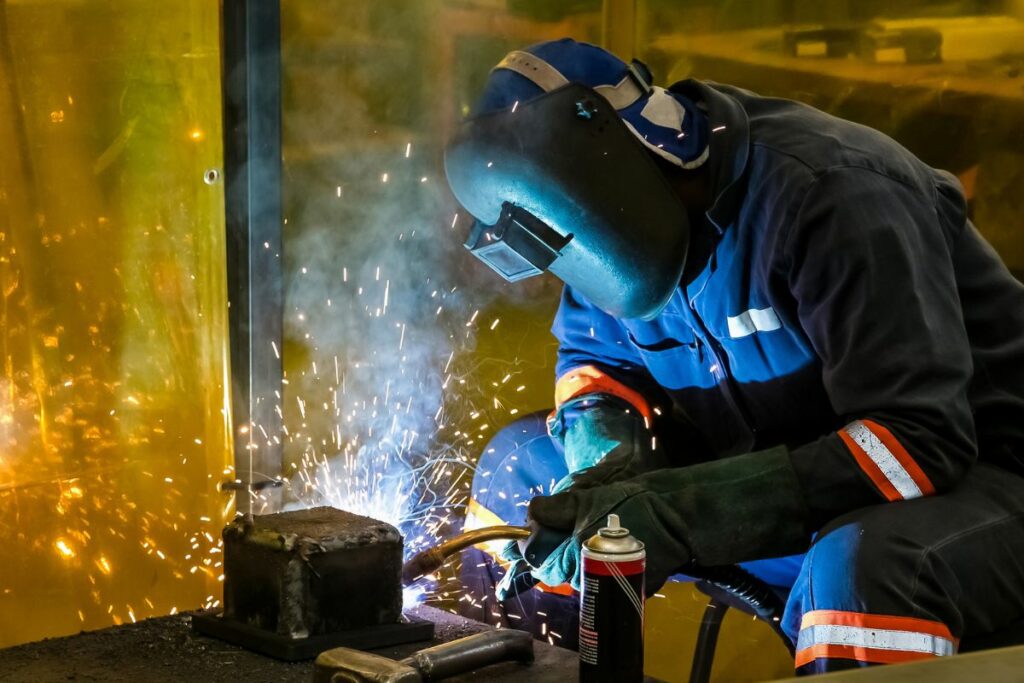
As with everything in life, safety should be a top priority. One crucial aspect of ensuring safety during welding is choosing the right protective clothing. Welding clothes are designed to shield welders from heat, flying sparks, molten metal, and other potential hazards in the workplace. Choosing the best materials for your welding clothes is essential to protect yourself from potential injuries or worse. Read on to find out the key factors to consider and also some of the best materials available for welding attire.
Welding involves intense heat, sparks, and flames. Therefore, your welding clothes must have excellent fire resistance to prevent burns and injuries. Look for materials that are inherently flame resistant, meaning they have properties that make them resistant to ignition and combustion. Avoid synthetic materials (i.e. nylon or polyester) as they can easily melt and stick to the skin when exposed to high temperatures, possibly leading to severe burns.
Along with fire resistance, welding clothes should also provide effective heat insulation. The material should be able to block and reflect the radiant heat generated during welding, keeping the wearer cool and comfortable. Look for materials with good insulating properties like heavy cotton or leather.
Welding can be a physically demanding job, with exposure to sparks, sharp objects, and rough surfaces. Choosing durable materials ensures that your welding clothes can withstand the rigors of the work environment. Look for fabrics that are tear-resistant and have high tensile strength.
Welding is often performed in hot and humid conditions, so it’s crucial to choose materials that allow air circulation and keep you comfortable. Breathable fabrics prevent excessive sweating and help regulate body temperature. Cotton is a popular choice for welding clothes due to its breathability.
Leather is a classic choice for welding clothing. It is highly durable, flame-resistant, and provides excellent protection against sparks and heat. Leather jackets, aprons, and gloves are commonly used in welding applications. However, leather can be heavy and less breathable compared to other materials.
Cotton is a natural fiber that offers good heat resistance and breathability. It is comfortable to wear and absorbs moisture, keeping the wearer dry. Cotton jackets, pants, and shirts are widely used in welding. Look for heavy weight cotton materials for better protection.
Some manufacturers treat cotton fabrics with flame-retardant chemicals to enhance their fire-resistant properties. These FR-treated cotton materials offer a balance between comfort and safety. They are often used in welding shirts, coveralls, and pants.
Denim is another popular choice for welding clothes. It is made from cotton and offers good durability and flame resistance. Denim jackets and pants are commonly worn by welders, providing adequate protection against sparks and light splatter.
Wool is a natural fiber well-known for its excellent insulation and resistance to fire. While not as commonly used in clothing for welders, wool can be a suitable option for colder environments. Wool jackets or blankets can provide extra protection and insulation.
Choosing the right materials for your welding clothes is crucial for ensuring your safety and protection on the job. Opt for materials that are fire-resistant, durable, and provide adequate heat insulation. Leather, cotton, denim, and wool are among the recommended materials for welding clothing. Remember to prioritize comfort and breathability, especially in hot working conditions. Investing in high-quality welding attire will not only safeguard you from potential hazards but also enhance your overall welding experience. Stay safe and protected by choosing the best materials for your welding clothes.